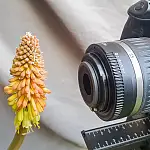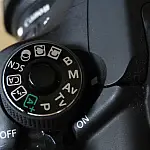Camera Metering Modes Demystified - Which One To UseCamera metering modes are the way that a camera decides how to calculate exposure. There are four main modes and we look at what they do and when they should be used.
This article is part of a series of articles. Please use the links below to navigate between the articles.
- Introduction to Photography Course - Definition & Types of Photography
- How Cameras Work and Terminology Explained for Beginners
- What is the Exposure Triangle and How Does It Affects Exposure?
- Understanding Camera Shutter Speed for Beginners
- Aperture and Depth of Field in Photography Explained
- What is Digital Photography ISO and Grain?
- How to Understand Camera Lenses and Focal Length
- Essential Photography Composition Rules To Improve Your Photos
- Camera Metering Modes Demystified - Which One To Use
- Camera Shooting and Exposure Modes Explained
- Complete Guide to Flash Photography for Beginners
- When and How To Use A Camera Tripod In Photography
- What Are White Balance And Colour Temperature Camera Settings?
- How to Use Camera Histograms in Photography for Perfect Exposure
- Master These 10 Camera Settings For Your Best Photographs
- Why You Should Be Shooting in RAW - Reasons and Benefits Explained
- Essential Photo Editing Techniques to Enhance Photographs
- Complete Guide to Macro Photography for Beginners
- Beginners Landscape Photography Guide for Stunning Photos
Cameras cannot alter the exposure for different parts of the photo, so it needs to be able to determine the best settings to get the average amount of light for the scene. We can help the camera by changing the metering mode to indicate what part of the scene is important to us, so the camera can give that part priority when calculating exposure.
What are Camera Metering Modes in Photography?
All cameras feature a means by which they look at the scene and determine what exposure settings to use. The camera metering mode is a simple selection of usually for options in which you tell the camera how much of the scene to look at when determining auto exposure - how your camera determines what the correct shutter speed and aperture should be, depending on the amount of light that goes into the camera and the ISO.
Metering works by assessing the amount of light available for a photograph and then adjusting the exposure accordingly.
Most of the time the default setting works well, however, sometimes the camera isn't intuitive enough to get the exposure right when using Program, Shutter Priority, or Aperture Priority modes. In these cases, you can make manual adjustments to the metering mode used by the camera. If you are in full auto mode then you generally cannot change camera metering modes.
Every DSLR has an integrated light meter that automatically measures the reflected light and determines the optimal exposure. Metering modes change the area and priority the light meter works on.
Canon and Nikon Camera Metering Modes Explained
Let's take a closer look at the four main camera metering modes that both Canon and Nikon cameras have. We'll see how they meter the light and when you should use that mode.
In the sections below you will find for each metering mode, the icon commonly used and a representation of where the metering occurs within the frame. The red area is the area being metered, with bright red having the most priority and light red/pink having minimal priority.
Evaluative (Canon) / Matrix Metering (Nikon)
Evaluative metering is the default metering mode and the only one used in automatic modes. Evaluative metering is best to use when lighting is relatively even across a scene, such as in a landscape with no extreme front or back lighting and is also good for most sports photography.
Evaluative metering takes all the pixels present in the entire scene tries to average the overall brightness and chooses the exposure accordingly.
This mode is a good all-rounder and is probably the easiest to use, but the downside is, it gives you the least control. I leave my camera metering mode on evaluative metering for most of my photography needs and only change it if the camera is struggling with the scene.
Centre-Weighted Metering Mode
In centre-weighted metering mode, the camera gives more priority to the tones in the centre of the image although it will also take some information from the outer meter points. It's easier to understand how the camera will react using this mode but the area it meters for is still quite large, so whilst it will give a better result in some situations, it's not the ideal mode.
Centre-Weighted still looks at the entire frame, however, the central part of the view is given priority. and the corners are almost ignored.
Unlike evaluative metering, centre-weighted metering does not look at the focus point you select and only evaluates the middle area of the image.
Use this mode when you want the camera to prioritize the middle of the frame, which works great for close-up portraits and relatively large subjects that are in the middle of the frame.
Spot Metering
With Spot Metering, the camera meters only a small part of the frame. This means that you can take a very precise reading, getting the exposure correct for your subject, and ignoring brighter or darker areas in the rest of the frame.
Spot metering works great for back-lit subjects which would otherwise appear as silhouettes. Spot metering works well with exposure lock which we will look at in a few minutes.
Partial Metering (Canon)
Canon cameras have an additional metering mode called Partial Metering. This mode functions a lot like spot metering, but the area the camera meters is a little bit larger.
Usage for partial metering is the same as spot metering.
What is the Best Camera Metering Modes?
For general photography and under good conditions, Evaluative / Matrix Metering is more than capable. It is the default setting for most cameras because it is a good all-rounder and can handle all but the trickiest of lighting. This is the mode I most often use, and only change away from it under specific situations.
There are times when evaluative metering cannot work 100% accurately and that is when there is high contrast between the background and subject. In these situations, the evaluative metering mode can cause over or under-exposure in the subject.

For this shot, I used spot metering on the centre AF point and targeted the Buzzard in flight. This way the camera got the exposure for the buzzard and I didn't care so much about over-exposing the sky. You can also use a centre-weighted mode which will work out the exposure for the centre AF point and a small area surrounding it.
Experiment with Metering Modes
Metering modes aren't perfect, but they are close. The most important thing when you are shooting is to check your histogram to be sure your exposures are good. If you are shooting in manual mode, you can choose to increase or decrease your aperture, shutter speed, or ISO based on the results you are getting. If you are shooting in aperture or shutter priority mode, you can use exposure compensation to tweak your exposure.
When conditions allow, changing between metering modes where possible, allows you to experience the differences between each setting yourself. There is nothing like knowing in advance how different lighting situations can be handled on camera.


















